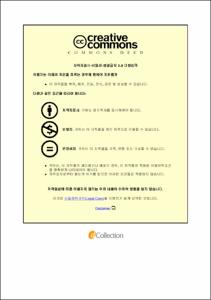다양한 임상 데이터에 대한 repeated time to event 모델 개선 및 NONMEM
- Alternative Title
- Refining repeated time-to-event models across different scenarios and implementing them in NONMEM
- Abstract
- Introduction: Non-parametric/parametric time to event (TTE) approaches are widely used in the analysis of clinical trial data for drug development. It is used to assess response to drug treatment, patient prognosis and adverse drug reactions.
The popularity of TTE modelling analysis is due to the ability to understand the progression of specific events over time, which allows simulations to predict long-term outcomes following different drug administration scenarios.
Objectives: Given the variety of ways to analyze the time to event in each case, an accurate analysis is essential to predict the time and frequency of events in different clinical settings over the long term.
This study aims to guide the use of appropriate methods by characterizing events, establishing an appropriate probability distribution function and then implementing it in NONMEM through the refined equations for different time-to-event data.
Methods: Stochastic algebraic equations for different types of time-to-event data were reviewed and re-derived to reflect the characteristics of the data types. Based on these newly derived equations, parametric time-to-event analyses were performed for each typical dataset of single or repeated time-to-event with exact or interval censored time. The results of these parametric analyses were compared with the non-parametric estimates of the mean cumulative function.
Results: We categorized time to event by single or repeated event and exact or interval censored time, based on whether the exact times of the events were known or only the time ranges of the events and the number of events within a patient. Equations for probability distributions (survival function, hazard function, cumulative hazard function) for each type of event dataset were re-derived for the following time-to-event data: repeated exact-time event, repeated interval-censored event.
The newly derived equations were then implemented in NONMEM® to estimate parameters for an exemplary time to event datasets, and they were compared with the results of conventionally used models in NONMEM.
Monte-Carlo simulation showed that the newly derived model better described the exemplary datasets represented by mean cumulative function estimates than conventional model.
NONMEM® simulation results applied to the datasets provided in the existing reference and arbitrary virtual datasets demonstrated the goodness of fit of the refined equation and highlighted the distinct differences from the existing equation.
Conclusion: Using the new equations presented in this research, we expect that we can evaluate time to event data from a variety of sources such as treatment outcomes and adverse drug reactions of investigational drugs with different characteristics. The result of the current research will help to properly evaluate the efficacy and safety of drugs.
- Issued Date
- 2024
- Awarded Date
- 2024-08
- Type
- Dissertation
- Alternative Author(s)
- jiyoung seo
- Affiliation
- 울산대학교
- Department
- 일반대학원 의과학과 의과학전공
- Advisor
- 임형석
- Degree
- Master
- Publisher
- 울산대학교 일반대학원 의과학과 의과학전공
- Language
- kor
- Rights
- 울산대학교 논문은 저작권에 의해 보호받습니다.
- Appears in Collections:
- Medical Science > 1. Theses (Master)
- 파일 목록
-
-
Download
 200000812440.pdf
기타 데이터 / 3.76 MB / Adobe PDF
200000812440.pdf
기타 데이터 / 3.76 MB / Adobe PDF
-
Items in Repository are protected by copyright, with all rights reserved, unless otherwise indicated.